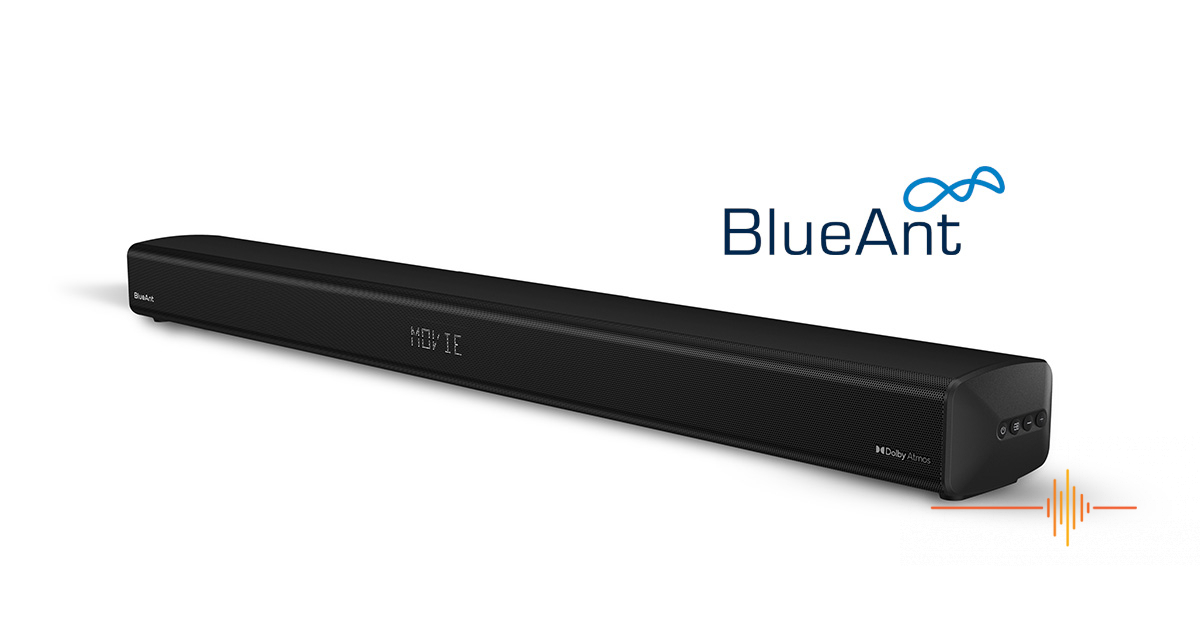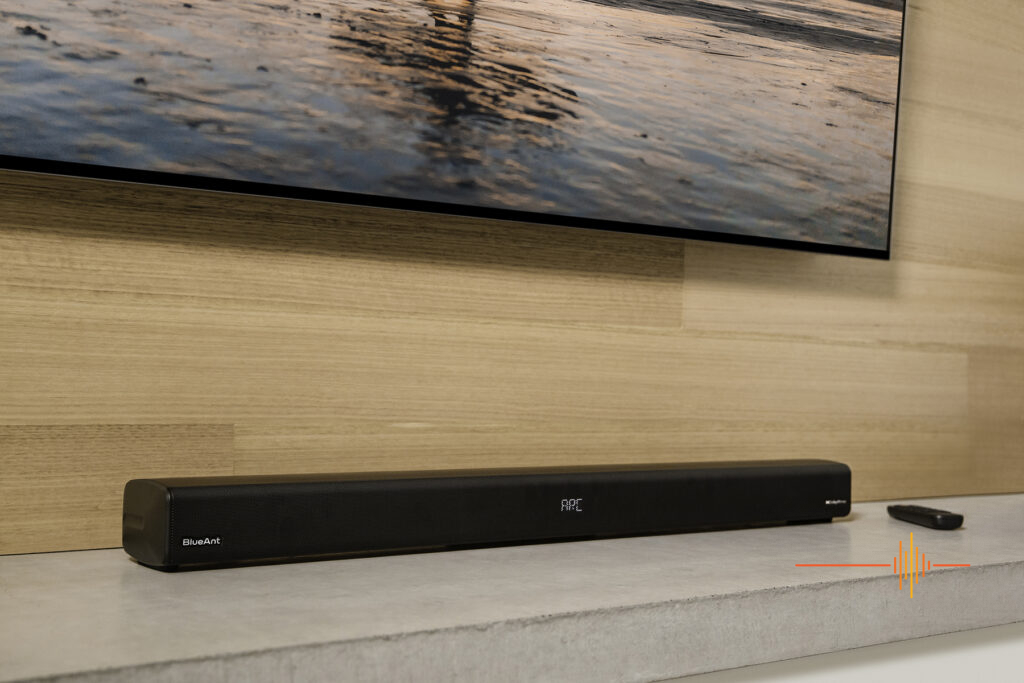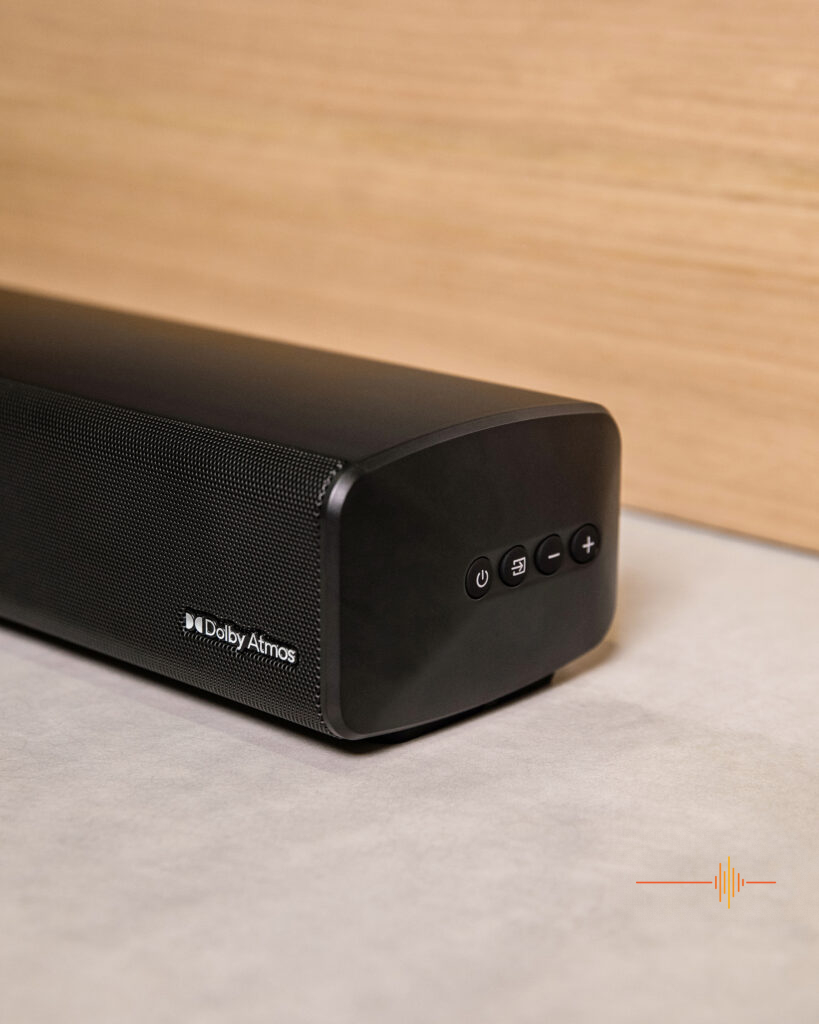I longed for the time when I had my Onkyo home theatre system and time to relax and watch TV. The home entertainment part has been a bit of a work in progress ever since I moved homes just as COVID hit.
The tinny built-in speakers from the TV is something we have been putting up with for the past 2 years. But no more! When BlueAnt unveiled their BlueAnt XT100 Soundbar, I was keen to test their goal of delivering exceptional sound at an affordable price to the home cinema experience.
First Impressions
It is black, it is long and it is sleek.
The first question my partner asked me was, does it have a fabric front? She was worried that our Bengal was going to try sharpen his claws on it. The answer is that it is covered with a very solid feeling metallic mesh. Bonus points awarded when the fashionista at home says it looks very sleek.
The BlueAnt XT100 comes in at 869x76x106mm (WxHxD) and 2.5kg with a very solid construct. There was no flex anywhere, even the front grill.
In the package BlueAnt has bundled in everything you need to get the show on the road: HDMI 2.0 cable, AUX cable, Power Cable, Remote Control and batteries, wall mounting brackets with screws.
Setting Up
The included instruction manual provided clear and concise instructions on connecting the XT100 to the TV via various methods. As would expect from an Australian headquartered company, there is no awkward English or funny translations to be found.
With the help of my Chief Unboxing Officer who is still small enough to squeeze into tight spots, we were quickly able to connect the HDMI cable into the ARC port on the TV.
The XT100 can support non-ARC (Audio Return Channel) compliant TV which is still a connection via HDMI.
There is also a TOSLINK (Optical) port, which is still pretty capable in this day and age. And if you are truly still in the dark ages, there is a coaxial port as well.
I moved my FireTV Stick into one of the HDMI ports on the XT100 to get the sound going through it. All in all, it took very little time to get the XT100 connected and powered on.
In Use
Moving away from the built-in TV speakers, the BlueAnt XT100 sound was pretty magical. Everything is richer, more punchy, more immersive.
But let’s rewind a bit and look at where we are at. BlueAnt aims to deliver exceptional sound at an affordable price, and by that we are looking at RRP of $349.00. There is plenty of competition at the four digit mark, and some at the lower end. However at the low end you have to really scratch around for a diamond in the rough for something that does not sound barely any better or louder than the tinny TV speakers.
I know it is a bit of a shame but the first sounds pumped through the XT100 was the soundtrack from My Little Pony. It is not exactly going to push the dynamic range, but I was more than a little impressed at just how full the sound is in comparison what we have gotten used to.
What is the experience like? The XT100 is 2.0CH with Dolby Atmos 1.7, compatible with Dolby Vision. It trounces the Bravia speakers hands down. Compared to the Onkyo 5.1.2 system I had, well, it is not exactly apples to apples comparison.
Moving across the room, the separation and the firing of the vocals and soundtrack through different speakers is really noticeable. Yes I know, My Little Pony. Hardly thrilling but little Miss loves it and she thought it sounded much better. That’s got to be a win right? Now if only I can get my TV back …
… cue daytime when kids are at school and I am thoroughly sick of the issues with a SaaS project that I am on. The music is blasting through the XT100 via my Plex server. I cycled through Pop, K-Pop, classics like Fleetwood Mac and The Eagles. Moving into instrumentals with a wider dynamic range.
Bearing in mind that the XT100 is a 2 channel system, we have to temper our expectations a little. As expected without a subwoofer, base is .. minimal. It is more a subdued underscoring of the music I am listening to, rather than a punchy baseline. The top end can sometimes lose clarity, with the sounds muddying and there is some loss of separation.
The mid-range and voice frequencies is generally excellent, as should be expected when the unit is geared for enhancing the home cinema experience.
Overall the experience is pleasant, immersive and a clear upgrade from the standard TV audio. With the right media playing, the Dolby Atmos support is definitely noticeable with the sound separation. Is it the best quality sound you can get on market? No, but you also didn’t sell both kidneys for it.
If you need to pump out some beats for a party, it will do just fine. No one is going to over analyse the sound when after a few drinks and conversations are flowing freely. There won’t be any house shaking bass to choose your tracks wisely.
Other Features
At this price point, it is hardly a surprise that the XT100 is a little no frills. There is no apps to finetune the soundbar equaliser.
That is not to say there is nothing to work with. There are four preset equaliser profiles – Voice, Sport, Movie, Music. Additionally you can adjust the Bass and Treble level. These are all available on the remote control. The differences are subtle in between the modes.
You can set an audio delay in 10ms intervals. This can be done by press and holding the Vertical/Surround button on the remote until the unit display show “Latency Set”.
Speaking of the display at the front of the unit, it always shows which input is active. If you find it a little distracting, you can dim it via the remote. There are three levels of brightness.
What other tricks does the XT100 has up it’s sleeves? Well you can pair your phone to it via Bluetooth and play music. BlueAnt rates the operational range of the Bluetooth connection at 8m with a clear line of sight.
Around the back is a USB port which can support devices with up to 32GB of memory and in MP3 format only.
Gripes
There are a couple, but really not deal breakers.
The size of the FireTV Stick means effectively one of the HDMI ports is unusable. You can fit that into the HDMI2 port which will encroach onto HDMI1. This is easily resolved with the included HDMI extension that comes with the FireTV Stick itself. Particularly if you intend to wall mount the XT100, you can’t have the FireTV Stick hanging straight out the back anyway.
USB port that only supports 32GB of memory? I don’t even own anything that small anymore. Reading the fineprint, FAT32/FAT16 and MP3 format only? Don’t get me wrong, it might be a nice to have in a pinch but with the port rated at 500mA only, I can’t even charge my phone while I stream music to it. It definitely is not enough to power a FireTV Stick.
The lack of app is both a blessing and a curse in disguise. Not everything needs an app, but that means any firmware updates will have to be over USB. A quick scan of the website doesn’t seem to show they provide much in the way of updates.
Conclusions
Sound experience is such an subjective quantifier. You can clinically measure everything but how each person’s brain processes audio is different.
Our lounge room is not particularly deep and is not suitable for a traditional system. The BlueAnt XT100 made a huge difference to our home theatre experience, with much a more immersive sound experience then I would have expected out of this unit.
BlueAnt has really nailed the brief. Yes at this price point of RRP $349 there are some no frills involved. It is suitable for a small to mid-sized room for someone looking to enhance their home theatre experience without wanting to splurge, or the complications of a 5.1 or 7.2CH systems. Just a simple, easy to install, ready to enjoy unit.
DRN would like to thank BlueAnt for providing the review unit.
Specifications
Power Consumption: 30W, < 0.5W on standby
Speakers Impedance: 4 Ohm x2
USB: 5V, 500 mA; USB 2.0 / FAT32 / FAT16; 32GB max, MP3
Audio input sensitivity: 500 mV
Frequency Response: 40Hz – 20kHz
Dimensions: 869 x 76 x 106 mm (WxHxD)
Net weight: 2.5 kg
Bluetooth Versions / Profiles: V5.1, A2DP, AVRCP
Bluetooth Maximum power transmitted: < 10 dBm
Bluetooth Frequency bands: 2402MHz ~ 2480MHz
Amplifier (RMS Output Power) Total: 100W
Amplifier (RMS Output Power) Soundbar: 50W x2








